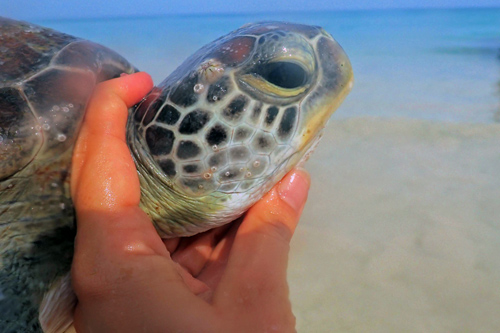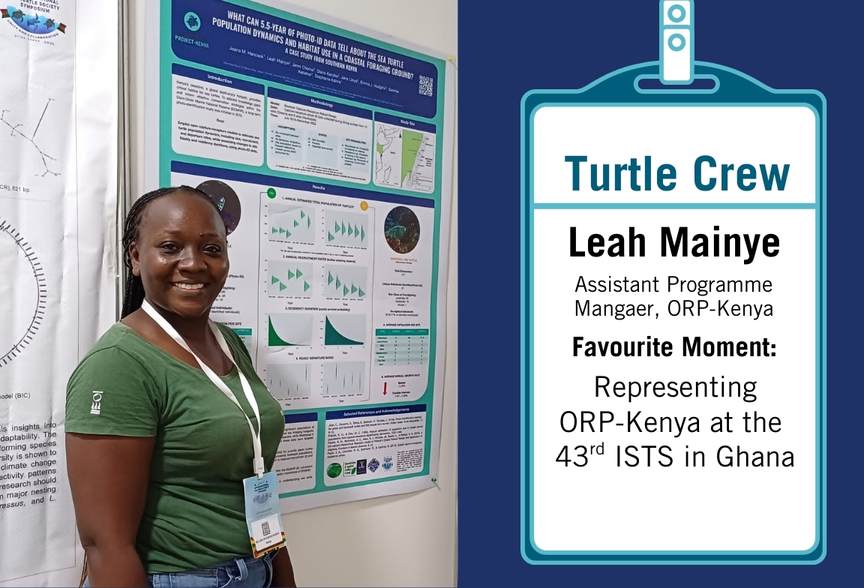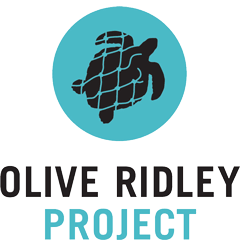
Welcome to the first edition of Let’s Talk Turtles! We’re thrilled to relaunch our quarterly newsletter, bringing you the latest updates, stories, and insights from the world of sea turtle conservation. In each edition, we’ll share progress on our projects, highlight inspiring success stories, and discuss the challenges still facing these remarkable creatures. Thank you for joining us on this important journey – together, we can make a lasting impact for sea turtles and the ecosystems they call home. If you are not already subscribed, you can do so here.
Research Deep Dive:
Microplastic On Beaches Threatens Turtle Nests
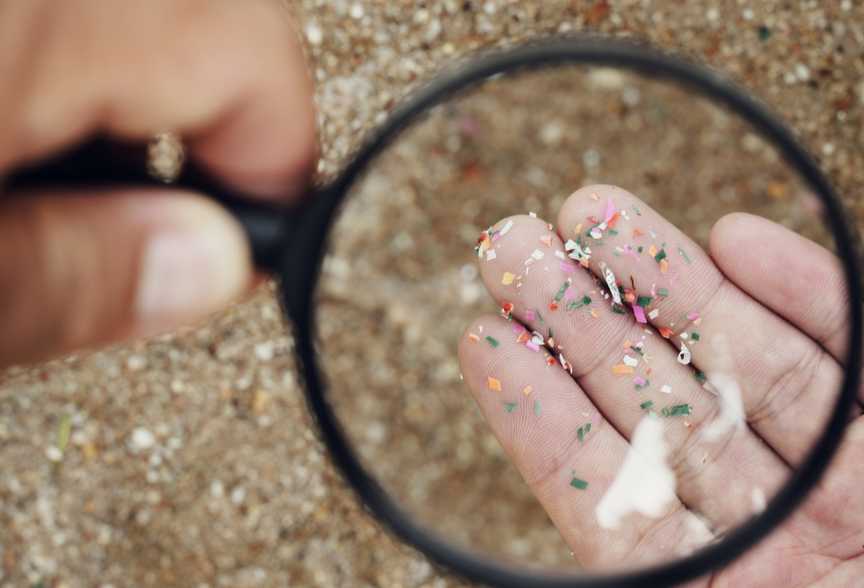
Did you know that approximately 19–23 million tons of plastic waste enters the marine environment every year? To put that into perspective, that’s one truckload of plastic getting dumped into ocean ecosystems every minute, 24/7, for an entire year.
While larger pieces of plastic like discarded bottles, plastic bags, fishing nets, are observable and hence grab public attention, smaller particles of plastic called microplastics slip through the public discourse. But, these tiny plastic particles, measuring less than 5mm, are a major concern. Because of their size, they can interact with a wider range of species across different life stages, inhabiting a diversity of habitats.
One such habitat is the beach, which often acts as a major sink for microplastics due to the influence of human activity and ocean currents. But beaches are also critical habitats for many species, one of which are sea turtles, who rely on sandy shores to lay their nests. Since plastics have a higher specific heat capacity than sand, especially darker plastics, their presence in sand can increase temperatures. This may in turn reduce nesting success and potentially skew sex ratio of incubating hatchlings.
To better understand this issue, a global team of marine turtle experts, including scientists from the Olive Ridley Project, conducted a large-scale study to measure microplastic levels on nesting beaches. Together, we sampled 209 sites across six oceans, using sieves and specialized equipment to collect data. The results were shocking!
Microplastics Were found on 45% of the beaches studied, with the Mediterranean showing the highest contamination at 80%.
This open-access study offers valuable insights into the scale of plastic pollution and serves as foundation for further research and conservation efforts. By shedding light on this data, we hope to create awareness and inspire action to protect these vital coastal ecosystems and nesting habitats for marine turtles. To learn more about the findings and their implications, you can read the full study published in the Marine Pollution Bulletin, titled “A Global Assessment of Microplastic Abundance and Characteristics on Marine Turtle Nesting Beaches.”
Field Diaries:
A Muddy Miracle: Saving 171 Hawksbill Hatchlings
After 70 days of incubation, hopes were fading for a hawksbill turtle nest tucked away at the back of Anse Peniche, Seychelles. Hawksbill nests on Félicité typically hatch between 55-65 days, so by day 70 – with no signs of hatching – we feared the nest had sadly failed.
But when Jack, our Sea Turtle Biologist, began excavating the nest to investigate what had gone wrong, he discovered a thick, compacted layer of mud that had formed over the nest, likely caused by recent heavy rains, sealing it off like a lid. Trapped beneath that hardened surface, to Jack’s surprise, he found 171 tiny hawksbill hatchlings still alive but unable to dig their way out. While we have seen many strange nest scenarios, this was a first for us!
Jack acted quickly, carefully helping each hatchling out and releasing them onto the beach to begin their journey to the ocean. Every hatchling that reaches the sea is vital for the survival of this species, which is currently listed as Critically Endangered by the International Union for Conservation of Nature (IUCN).
Rescuing these hatchlings and giving them a second chance was not only truly rewarding, but also a powerful reminder of why nest monitoring and excavation are such vital parts of our conservation efforts. With a bit of luck, some of these hatchlings will return to Félicité in around 30 years to lay nests of their own, continuing a remarkable legacy that’s been unfolding for millions of years.
Reflections from a Sea Turtle Veterinary Surgeon
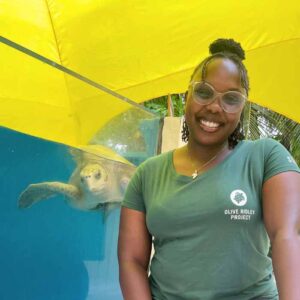
ORP Associate Veterinary Surgeon Dr Michelle
Dr Michelle joined our veterinary team at the Marine Turtle Rescue Centre in Baa Atoll in December 2024 as an Associate Veterinary Surgeon. Here is what she has to say about her journey so far:
Even though we strive to provide the best medical attention to our patients, with the goal of rehabilitating them, nature ultimately decides the outcome. One of the most poignant moments was when we lost Kurumba in March – our beloved girl who had been in our care since February 2024. Though her death felt like a sharp loss, it was immediately followed by the arrival of Anaa, a female olive ridley ghost net victim, reminding me that there is always another life to tend to. This cycle of loss and hope has been a rollercoaster, but it has instilled in me a deep sense of purpose.
This purpose was only reaffirmed with the release of Nahida into the wild on March 7th. Nahida, a female olive ridley patient, had spent three months in rehabilitation with us. Watching her swim free brought immense joy and strengthened my belief in the impact of our work.
Throughout my journey with the Olive Ridley Project, I have been continuously learning about sea turtles and the complexities of their conservation. I am fortunate to be part of a dedicated team of passionate individuals, all brought together by a shared mission to protect these incredible creatures. The diversity within our team, with individuals from different backgrounds and perspectives, has been inspiring. Despite our differences, we work seamlessly together towards a common goal, and it has been both humbling and motivating to witness such collaboration.
ORP has not only provided me with a fulfilling role in sea turtle conservation but has also given me a sense of belonging, a place to grow, and an opportunity to contribute meaningfully to the preservation of marine life. It is such a privilege to be part of something that is bigger than myself!
Can Sea Turtle Tourism Be Sustainable?

Having just wrapped up the second edition of the Sea Turtle Conservation Cruise with our partners and sustainable tourism experts Secret Paradise, we’re happy to report: when done mindfully, sea turtle tourism can tread lightly and even give back!
Here’s how the second edition of Sea Turtle Conservation Cruise in March aboard MV Felicity ticked all the right boxes:
A conservation partner is onboard
To go beyond sightseeing, tours should offer guests the chance to learn and contribute. That’s where conservation partners can help! On the conservation cruise, ORP Maldives’s Project Assistant Sarah took on the role of sea turtle expert. She delivered engaging, easy-to-understand talks on sea turtle biology, behaviour, and threats. The six guests, including a curious seven-year-old, put their new knowledge into action during daily guided snorkels, where Sarah helped them follow ORP’s code of conduct while swimming alongside sea turtles and collecting Photo-IDs for research!
Local tour leaders
Local tour leaders bring deeper knowledge and authenticity to travel experiences, ensuring that tourism is rooted in culture and community. This cruise was led by Shark, from Haa Alifu Atoll, whose enthusiasm in guiding travellers and love for Maldivian culture and ecosystems gave guests fresh perspectives into their travels.
Meaningful experiences
Good tourism goes beyond ticking off a check list of sightings. It offers hands-on, meaningful experiences. The cruise provided daily sea turtle snorkels paired with hands-on learning, teaching guests how to collect sea turtle Photo-ID data and actively contribute to citizen science. By the end of the trip, the group had submitted 15 Photo-IDs, including four newly sighted turtles.
Habitats in focus
Conservation isn’t just about animals, it’s also about protecting the habitats they inhabit. On this cruise, guests snorkelled through crucial sea turtle habitats like coral reefs and seagrass beds in South Malé and Vaavu Atolls, with Shark providing an awareness session on the importance of seagrass, an often overlooked habitat. Sightings of reef sharks and eagle rays only added to the guest’s understanding of these productive ecosystems.
Cultural immersion
You can’t protect nature without understanding the people who share space with it, and their relationship with their ecosystems. The cruise included a visit to the fishing island of Gulhi, home to the Maldives’ oldest dry dock boat yard. Here guests got a glimpse into traditional livelihoods and everyday island life.
The Sea Turtle Conservation Cruise shows how thoughtful tourism can support local livelihoods, boost conservation participation, even spark learning. Our guests left with a pocketful of turtley awesome memories, and the satisfaction of having made a difference.
Want to join the next one in February 2026? Book here, we’d love to have you aboard!
Did you know?
Our Socio-Economic Study found that sea turtle tours in the Maldives generated at least USD 1.08 million in direct revenue in 2019, highlighting their value as a consistent, year-round source of income for the tourism industry.
Threat Alert: Bycatch in Oman Peaks
In Oman, bycatch incidents are closely linked to the intensity of fishing activity. This connection was evident in February, when fishing surged ahead of Ramadan, a period traditionally marked by increased demand for fish. As expected, the spike in fishing activity brought with it a corresponding rise in bycatch.
In February, we recorded nine green sea turtles entangled in fishing nets hauled up at Zighy Bay. Alarmingly, one net contained six turtles, the highest bycatch number we have ever documented from a single net in the area. These incidents highlight how small scale fisheries interact with sea turtles, often having negative consequences for sea turtles.
All the bycatch turtles were juveniles, confirming Photo-ID trends which show an increase in juvenile green turtles in the region. Thankfully, none of the turtles had any signs of injury. Our team quickly recorded their data, identifying three of the individuals – GM283, GM276, and GM297 (above) – as green turtles previously catalogued in our database, while six were new additions.
After collecting the necessary information, we released the sea turtles and extended our gratitude to the fishermen for their cooperation. We’re continuing our work with the local fishing community through regular patrols and awareness sessions aimed at reducing bycatch and protecting sea turtles.
By March, as fishing activity slowed with the beginning of Ramadan, we observed a welcome decline in bycatch numbers. If you are curious to learn more about bycatch and its impact on marine ecosystems, tune into our podcast episode on the subject.
Turtle Crew:
Leah Mainye makes her first ISTS migration
“This symposium wasn’t just for Africa’s pride, it equipped me with a new knowledge of sea turtles and a transformed way of navigating the world of sea turtle conservation.” says Leah Mainye, ORP – Kenya’s Assistant Programme Manager.
There comes a time in a sea turtle conservationist’s life, when taking after their subjects, they too make a yearly migration to a congregation known as International Sea Turtle Society Symposium (ISTS).
Since 1981, this international gathering has involved sea turtle biologists, conservationists, educators, indigenous groups and advocates, all of whom gather to share knowledge, build capacity, network and collaborate and ultimately, promote the protection and conservation of sea turtles.
This March, Leah Mainye, ORP – Kenya’s Assistant Programme Manager, travelled to Accra, Ghana, for the 43rd International Sea Turtle Symposium, a historic first for the continent. Excited to connect our sea turtle conservation efforts in Kenya to wider regional work, Leah was joined by our Research Coordinator, Dr Joana Hancock, a seasoned ISTS participant.
“I am incredibly grateful to have attended my first (and definitely not my last!) ISTS, where I connected with amazing people. I even got the opportunity to serve as a judge for the grassroots conservation award. I was able to gain valuable insights into all the different kind of work happening across the world. And of course I was thrilled to finally meet our Lead Veterinary Surgeon Dr. Max in person!”
Leah Mainye
Together, they presented two posters showcasing our Sea Turtle Ambassador Programme and five years of Photo-ID monitoring in the Diani-Chale Marine National Reserve. The posters were well received, offering clear, tangible insights into our participative community-led conservation approach.
At the Africa and Indian Ocean regional meetings, Leah and Joana shared a quick overview of our work with 70 to 150 people, and even screened a first look of our short film supported by Ocean Culture. The film was praised for its powerful visual narrative of our efforts in community conservation in Kwale County.
Beyond knowledge sharing, the symposium provided a valuable opportunity to forge new connections. Leah and Joana returned energised and inspired, having established promising links for future partnerships and potential funding support. A heartfelt thank you to the ISTS sponsors for making their participation possible and helping amplify the impact of our work.
Voices For Conservation:
Is it time we rethink sea turtle conservation practice?
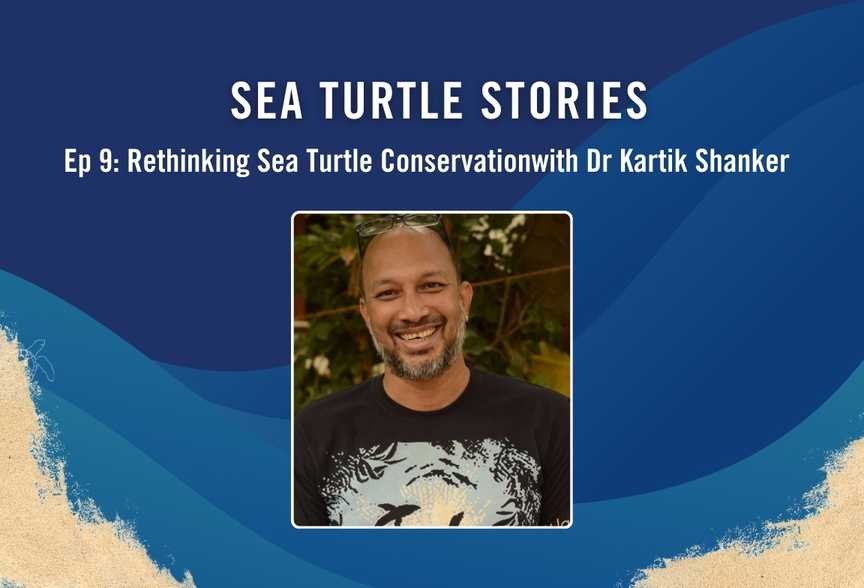
‘For me, I think sea turtles are doing all right.’ says Kartik Shanker, an accomplished scientist and a sea turtle conservationist from India. “Sea turtle conservation, on the other hand, could certainly evolve to be more broad-minded and pluralistic, and capture not only the wealth of ecological connections that sea turtles have, but also the richness of social connections that we have with them.”
These words serve as a precautionary tale from Dr Kartik, who has long advocated for decolonising sea turtle conservation and embracing more pluralistic ways of engaging with nature.
Sea Turtle Stories is back with a two-part special featuring Dr Kartik Shanker from Dakshin Foundation, an organisation committed to environmental stability and social justice in India.
From the contentious issue of harvesting sea turtle eggs and meat, to the protectionist regime of conservation that alienates communities, Dr Kartik lays bare the complex, and often uncomfortable realities of conservation
Tune in now for a thought-provoking discussion that invites us to question familiar narratives, sit with the discomfort of nuance, and rethink conservation beyond its current practice.


